Tutorials
T1 - Massive MIMO – Fundamentals, Trends and Recent Developments
Speakers:

Emil Björnson
Linköping University, Sweden
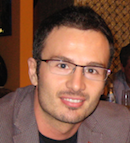
Luca Sanguinetti
University of Pisa, Italy
Schedule
Tuesday, August 28
09:00 - 12:30
Room: C302
Summary
Multiuser MIMO (MU-MIMO) technology consists of using multiple jointly processed antennas at the infrastructure side to separate interference in the spatial domain, allowing multiple users to send (uplink) or receive (downlink) data simultaneously, on the same time-frequency slot. While MU-MIMO is theoretically well-understood and has been around for decades, only relatively recently it has overcome practical implementation skepticism, and has become a mainstream technology. An important step forward, that pushed industry to widely embrace MU-MIMO, is the introduction of the concept of “Massive MIMO”. This consists of a particular regime of MU-MIMO where the number of base station antennas is much larger than the number of simultaneously transmitted data streams. Everybody talks about Massive MIMO, but do they all mean the same thing? What is the canonical definition of Massive MIMO? What are the differences from the classical MU-MIMO technology from the nineties? How does the channel model impact the spectral efficiency? How can Massive MIMO be deployed and what is the impact of hardware impairment? Is pilot contamination a problem in practice?
This first half of this tutorial aims to answer all the above questions and to explain why Massive MIMO is a promising solution to handle several orders-of-magnitude more wireless data traffic than today’s technologies. The second half reviews the most significant trends that are pushing the original Massive MIMO ideas in different directions, including: the key role of Massive MIMO when designing cellular networks that are highly energy efficient; how Massive MIMO makes more efficient use of the hardware, which opens the door for using component with lower resolution; an overview of important practical aspects, such as power allocation, pilot assignment, scheduling, load balancing, channel modeling, array deployment, and the role of Massive MIMO in heterogeneous networks.
Biography
Emil Björnson has a 10-years’ experience on multi-user MIMO research. His expertise has been acknowledged by 5 best paper awards on multi-user MIMO technology and by a handful of related patent applications. He received the Ph.D. degree from the KTH Royal Institute of Technology, Sweden, in 2011. From 2012 to July 2014, he was a postdoc at Supélec, France. He joined Linköping University, Sweden, in 2014 and is currently an Associate Professor at the Division of Communication Systems. He received the 2016 Best PhD Award from EURASIP, the 2015 Ingvar Carlsson Award, and the 2014 Outstanding Young Researcher Award from IEEE ComSoc EMEA. He is the first author of the magazine article “Massive MIMO: Ten Myths and One Critical Question” (2016), the textbook “Optimal Resource Allocation in Coordinated Multi-Cell Systems” (2013) and "Massive MIMO Networks: Spectral, Energy, and Hardware Efficiency". He is dedicated to reproducible research and has made a large amount of simulation code publicly available. His research interests include multi-antenna cellular communications, Massive MIMO technology, radio resource allocation, energy efficient networking, and hardware-impaired communications. He is on the editorial board of the IEEE Transactions on Communications (since 2017) and the IEEE Transactions on Green Communications and Networking (since 2016).
L. Sanguinetti is an Assistant Professor in the Dipartimento di Ingegneria dell’Informazione of the University of Pisa. He received the Telecommunications Engineer degree (cum laude) and the Ph.D. degree in information engineering from the University of Pisa, Italy, in 2002 and 2005, respectively. In 2004, he was a visiting Ph.D. student at the German Aerospace Center (DLR), Oberpfaffenhofen, Germany. During the period June 2007 - 2008, he was a postdoctoral associate in the Department of Electrical Engineering at Princeton. Since July 2013, he is also with CentraleSupelec, Paris, France. He is serving as an Associate Editor for IEEE Trans. Wireless Commun. and IEEE Signal Process. Lett. He is the Lead Guest Associate Editor for IEEE JSAC - Game Theory for Networks. From June 2015 to June 2016, he was in the editorial board of IEEE JSAC - Series on Green Commun. and Networking. Dr. Sanguinetti served as Exhibit Chair of ICASSP14 and as the general co-chair of the 2016 Tyrrhenian Workshop on 5G&Beyond. He is a co-author of the textbook ``Massive MIMO Networks: Spectral, Energy, and Hardware Efficiency’’ (2017). His expertise and general interests span the areas of communications and signal processing with special emphasis on multiuser MIMO, game theory and random matrix theory for wireless communications. He was the co-recipient of 2 best paper awards: IEEE Wireless Commun. and Networking Conference (WCNC) 2013 and IEEE Wireless Commun. and Networking Conference (WCNC) 2014. He was also the recipient of the FP7 Marie Curie IEF 2013 “Dense deployments for green cellular networks”. Dr. Sanguinetti is a Senior IEEE Member.
[Download handouts]
T2 - Wireless Radio Access for 5G and Beyond
Speaker:
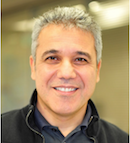
Huseyin Arslan
University of South Florida, USA
Schedule
Tuesday, August 28
09:00 - 12:30
Room: C202
Summary
Today's wireless services and systems have come a long way since the rollout of the conventional voice-centric cellular systems. The demand for wireless access in voice and multi-media applications has increased tremendously. In addition to these, new application classes like extreme mobile broadband communication, ultra reliable and low latency communications, massive machine type communications, and Internet of Things have gained significant interest recently for 5G. The trend on the variety and the number of mobile devices along with the mobile applications will certainly continue beyond 5G, creating a wide range of technical challenges such as cost, power efficiency, spectrum efficiency, extreme reliability, low latency, robustness against diverse channel conditions, cooperative networking capability and coexistence, dynamic and flexible utilization of wireless spectrum. In order to address these technical challenges, 5G waveforms and radio access technologies (RATs) should be much more flexible. The current 4G systems rely on the orthogonal frequency multiple access (OFDM) waveform, which is not capable of supporting the diverse applications that 5G and beyond will offer. This is because the traffic generated by 5G and beyond is expected to have radically different characteristics and requirements when compared to current wireless technology. For 5G to succeed, numerous waveform alternatives have been explored to best meet its various technical requirements. However, none of the alternatives were able to address all the requirements at the same time.
During the standardization of 5G, one thing has become certain: there is no single enabling technology that can achieve all of the applications being promised by 5G networking. This will be even more pronounced beyond 5G. For this purpose, the concept of using multiple OFDM numerologies, i.e., different parameterization of OFDM based subframes, within the same frame has been proposed in 3GPP discussions for 5G. This concept will likely meet the current expectations in multiple service requirements to some extent. However, since it is almost obvious that quantity of wireless devices, applications, and heterogeneity of user requirements will keep increasing towards the next decade(s), the sufficiency of the aforementioned flexibility level remains quite disputable considering future expectations. Therefore, novel RATs facilitating much more flexibility are needed to address the aforementioned technical problems.
In this tutorial, we will discuss the potential directions to achieve further flexibility in RATs beyond 5G. In this context, a framework for developing flexible waveform, numerology, and frame design strategies will be discussed along with sample methods in this direction. We will also discuss their potential role to handle various issues in the upper system layers.
Biography
Dr. Arslan (IEEE Fellow) has received his BS degree from Middle East Technical University (METU), Ankara, Turkey in 1992; MS and Ph.D. degrees in 1994 and 1998 from Southern Methodist University (SMU), Dallas, TX. USA. From January 1998 to August 2002, he was with the research group of Ericsson Inc., NC, USA, where he was involved with several projects related to 2G and 3G wireless communication systems. Since August 2002, he has been with the Electrical Engineering Dept. of University of South Florida, Tampa, FL, USA, where he is a Professor. In December 2013, he joined Istanbul Medipol University to found the Engineering College, where he has worked as the Dean of the School of Engineering and Natural Sciences. He has also served as the director of the Graduate School of Engineering and Natural Sciences in the same university. In addition, he has worked as a part-time consultant for various companies and institutions including Anritsu Company, Savronik Inc., and The Scientific and Technological Research Council of Turkey.
Dr. Arslan’s research interests are related to advanced signal processing techniques at the physical and medium access layers, with cross-layer design for networking adaptivity and Quality of Service (QoS) control. He is interested in many forms of wireless technologies including cellular radio, wireless PAN/LAN/MANs, fixed wireless access, aeronautical networks, underwater networks, in vivo networks, and wireless sensors networks. His current research interests are on 5G and beyond, physical layer security, interference management (avoidance, awareness, and cancellation), cognitive radio, small cells, powerline communications, smart grid, UWB, multi-carrier wireless technologies, dynamic spectrum access, co-existence issues on heterogeneous networks, aeronautical (High Altitude Platform) communications, in vivo channel modeling and system design, and underwater acoustic communications. He has served as technical program committee chair, technical program committee member, session and symposium organizer, and workshop chair in several IEEE conferences. He is currently a member of the editorial board for the IEEE Surveys and Tutorials and the Sensors Journal. He has also served as a member of the editorial board for the IEEE Transactions on Communications, the IEEE Transactions on Cognitive Communications and Networking (TCCN), the Elsevier Physical Communication Journal, the Hindawi Journal of Electrical and Computer Engineering, and Wiley Wireless Communication and Mobile Computing Journal.
[Download handouts]
T3 - NOMA for Next Generation Wireless Networks: State of the Art, Research Challenges and Future Trends
Speakers:
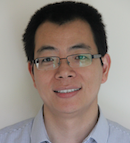
Zhiguo Ding
University of Manchester, UK
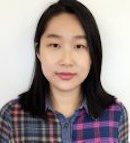
Wei Liang
Northwesten Polytechnical University, China
Schedule
Tuesday, August 28
09:00 - 12:30
Room: C205
Summary
Non-orthogonal multiple access (NOMA) is an essential enabling technology for the fifth generation (5G) wireless networks to meet the heterogeneous demands on low latency, high reliability, massive connectivity, improved fairness, and high throughput. The key idea behind NOMA is to serve multiple users in the same resource block, such as a time slot, subcarrier, or spreading code. The NOMA principle provides a general framework, where several recently proposed 5G multiple access techniques can be viewed as special cases. Recent demonstrations by industry show that the use of NOMA can significantly improve the spectral efficiency of mobile networks. Because of its superior performance, NOMA has been also recently proposed for downlink transmission in 3rd generation partnership project long-term evolution (3GPP-LTE) systems, where the considered technique was termed multiuser superposition transmission (MUST). In addition, NOMA has been included into the next generation digital TV standard, e.g. ATSC (Advanced Television Systems Committee) 3.0, where it was termed Layered Division Multiplexing (LDM). This tutorial is to provide an overview of the latest research results and innovations in NOMA technologies, where various signal processing algorithms and transceiver designs in NOMA systems will be also introduced. Future research challenges regarding NOMA in 5G and beyond are also presented.
Biography
Zhiguo Ding received his B.Eng in Electrical Engineering from the Beijing University of Posts and Telecommunications in 2000, and the Ph.D degree in Electrical Engineering from Imperial College London in 2005. From Jul. 2005 to Apr. 2018, he was working in Queen's University Belfast, Imperial College, Newcastle University and Lancaster University. Since Apr. 2018, he has been with the University of Manchester as a Professor in Communications. From Oct. 2012 to Sept. 2018, he has also been an academic visitor in Princeton University. Dr Ding' research interests are 5G networks, game theory, cooperative and energy harvesting networks and statistical signal processing. He is serving as an Editor for IEEE Transactions on Communications, IEEE Transactions on Vehicular Technology, and Journal of Wireless Communications and Mobile Computing, and was an Editor for IEEE Wireless Communication Letters, IEEE Communication Letters from 2013 to 2016. He received the best paper award in IET ICWMC-2009 and IEEE WCSP-2014, the EU Marie Curie Fellowship 2012-2014, the Top IEEE TVT Editor 2017, IEEE Heinrich Hertz Award 2018 and the IEEE Jack Neubauer Memorial Award 2018.
Dr. Wei Liang received the M.Sc. and Ph.D. degrees in wireless communication from the University of Southampton, Southampton, U.K., in 2010 and 2015, respectively. From 2015 to 2018, she was currently a Research Fellow with Lancaster University, and from 2018, she is an associate professor with Northwesten Polytechnical University. Her research interests include adaptive coded modulation, network coding, matching theory, game theory, cooperative communication, cognitive radio network, and non-orthogonal multiple access scheme.
[Download handouts]
T4 - Wireless Communications and Networking with Unmanned Aerial Vehicles
Speaker:
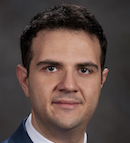
Walid Saad
Virginia Tech, USA
Schedule
Tuesday, August 28
13:30 - 17:00
Room: C302
Summary
Unmanned aerial vehicles (UAVs) are expected to become an integral component of future smart cities. In fact, UAVs are expected to be widely and massively deployed for a variety of critical applications that include surveillance, package delivery, disaster and recovery, remote sensing, and transportation, among others. More recently, new possibilities for commercial applications and public service for UAVs have begun to emerge, with the potential to dramatically change the way in which we lead our daily lives. For instance, in 2013, Amazon announced a research and development initiative focused on its next-generation Prime Air delivery service. The goal of this service is to deliver packages into customers' hands in 30 minutes or less using small UAVs, each with a payload of several pounds. 2014 has been a pivotal year that has witnessed an unprecedented proliferation of personal drones, such as the Phantom and Inspire from DJI, the Lone Project from Google, AR Drone and Bebop Drone from Parrot, and IRIS Drone from 3D Robotic. Such a widespread deployment of UAVs will require fundamental new tools and techniques to analyze the possibilities of wireless communications using UAVs and among UAVs. In the telecom arena, flying drones are already envisioned by operators to help provide broadband access to under-developed areas or provide hot-spot coverage during sporting events. More generally flying drones are expected to become widespread in the foreseeable future. These flying robots will develop a unique capability of providing a rapidly deployable, highly flexible, wireless relaying architecture that can strongly complement small cell base stations. UAVs can provide “on-demand” densification, help push content closer to the end-user at a reduced cost and be made autonomous to a large extent: Airborne relays can self-optimize positioning based on safety constraints, learning of propagation characteristics (including maximizing line of sight probability) and of ground user traffic demands. Finally UAVs can act as local storing units making smart decisions about content caching. Thus airborne relays offer a promising solution for ultra-flexible wireless deployment, without the prohibitive costs related to fiber backhaul upgrading. Yet another example is when UAVs can be used as flying base stations that can be used to serve hotspots and highly congested events, or to provide critical communications for areas in which no terrestrial infrastructure exists (e.g., in public safety scenarios or in rural areas). Clearly, UAVs will revolutionize the wireless industry and there is an ever increasing need to understand the potential and challenges of wireless communications using UAVs.
To this end, this tutorial will seek to provide a comprehensive introduction to wireless communications using UAVs while delineating the potential opportunities, roadblocks, and challenges facing the widespread deployment of UAVs for communication purposes. First, the tutorial will shed light on the intrinsic properties of the air-to-ground and air-to-air channel models while pinpointing how such channels differ from classical wireless terrestrial channels. Second, we will introduce the fundamental performance metrics and limitations of UAV-based communications. In particular, using tools from communication theory and stochastic geometry, we will provide insights on the quality-of-service that can be provided by UAV-based wireless communications, in the presence of various types of ground and terrestrial networks. Then, we will analyze and study the performance of UAV-to-UAV communications. Subsequently, having laid the fundamental performance metrics, we will introduce the analytical and theoretical tools needed to understand how to optimally deploy and operate UAVs for communication purposes. In particular, we will study several specific UAV deployment and mobility scenarios and we will provide new mathematical techniques, from optimization, game, and probability theory that can enable one to dynamically deploy and move UAVs for optimizing wireless communications. Moreover, we will study, in detail, the challenges of resource allocation in networks that rely on UAV-based communications. Throughout this tutorial, we will highlight the various performance tradeoffs pertaining to UAV communications ranging from energy efficiency to mobility and coverage. The tutorial concludes by overviewing future opportunities and challenges in this area.
Biography
Walid Saad received his Ph.D degree from the University of Oslo in 2010. Currently, he is an Associate Professor at the Department of Electrical and Computer Engineering at Virginia Tech, where he leads the Network Science, Wireless, and Security (NetSciWiS) laboratory, within the Wireless@VT research group. His research interests include wireless networks, machine learning, game theory, cybersecurity, unmanned aerial vehicles, and cyber-physical systems. Dr. Saad is the recipient of the NSF CAREER award in 2013, the AFOSR summer faculty fellowship in 2014, and the Young Investigator Award from the Office of Naval Research (ONR) in 2015. He was the author/co-author of six conference best paper awards at WiOpt in 2009, ICIMP in 2010, IEEE WCNC in 2012, IEEE PIMRC in 2015, IEEE SmartGridComm in 2015, and EuCNC in 2017. He is the recipient of the 2015 Fred W. Ellersick Prize from the IEEE Communications Society. From 2015-2017, Dr. Saad was named the Stephen O. Lane Junior Faculty Fellow at Virginia Tech and, in 2017, he was named College of Engineering Faculty Fellow. He currently serves as an editor for the IEEE Transactions on Wireless Communications, IEEE Transactions on Communications, IEEE Transactions on Mobile Computing, and IEEE Transactions on Information Forensics and Security.
[Download handouts]
T5 - Machine-type communications: from massive connectivity to ultra-reliable low latency communication
Speakers:

Hirley Alves
University of Oulu, Finland
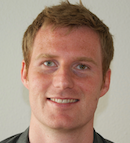
Jimmy Jessen Nielsen
Aalborg University, Denmark
Schedule
Tuesday, August 28
13:30 - 17:00
Room: C202
Summary
This tutorial focuses on Machine-type communications (MTC), from massive connectivity to ultra-reliability and low latency communications. MTC are at the core of the 5G revolution, which natively addresses MTC as: massive MTC and ultra-reliable, low latency communication. Massive MTC (mMTC) tackles issues related to large number of devices and their connectivity and spectral and energy efficiency. On the other hand, ultra-reliable, low latency communication (URLLC) focuses on mission critical communication where high reliability and low latency communication are mandatory. Thus enabling MTC networks operation with heterogeneous requirements -- massive connectivity, to ultra-reliability and low latency -- challenging current understanding of conventional techniques for wireless communications. In this tutorial we present common characteristics of distinct applications in different industry verticals (smart metering, V2X, industry automation), we discuss the current state-of-the-art, key challenges and open problems covering PHY, MAC and networking issues.
Biography
Hirley Alves received the B.Sc. and M.Sc. degrees from Federal University of Technology - Paraná (UTFPR), Brazil, in 2010 and 2011, respectively, both in Electrical Engineering. Hirley received dual D.Sc. degree from University of Oulu and UTFPR in 2015. Dr. Alves is Adjunct Professor on Machine-type Wireless Communications at Centre for Wireless Communications (CWC), University of Oulu, Oulu, Finland. Dr. Alves has acted as organizer, chair, and serves TPC to several renowned international conferences. Dr. Alves is engaged in several projects nationally and internationally (5GPPP) on mMTC and URLLC. Dr. Alves has given many tutorials on the topic of full-duplex communications for instance at European Wireless 2016, ISWCS’16 and 17, EUCNC’17, and the is the chair of the workshop series on full-duplex communications for future wireless networks at ICC’17, Globecom’17 and ICC’18. Dr. Alves has recently received the title of docent on Machine type Wireless Communications, and he is actively working on massive connectivity and ultra-reliable low latency communications. His research interests are wireless and cooperative communications, wireless full-duplex communications, PHY-security and ultra-reliable communications mechanisms for future machine type wireless networks.
Jimmy Jessen Nielsen obtained his B.Sc. and M.Sc. from the Department of Electronic Systems, Aalborg University, Denmark. He obtained his Ph.D. in Wireless Communications from Aalborg University in 2011 and is currently associate professor in Reliable IoT Communications at the Department of Electronic Systems, Aalborg University. His research interests are on ultra-reliable communication and low latency communication (URLLC), network slicing, access reservation protocols, internet of things (IoT) protocols, traffic models, wireless networks, and performance analysis, using communication and probability theory as well as machine learning. He has been involved in both FP7 and H2020 (5GPPP) projects, working on the topics of URLLC and mMTC in the context of smart grid, IoT and 5G systems. He was the co-chair of the International Workshop on Multiple Access Communications (MACOM) 2016 and is currently co-organizing the IEEE SmartGridComm 2018 conference. He has authored and co-authored more than 40 publications in conferences, journals, and books. He has served as reviewer for various IEEE journals and conferences.
[Download handouts]
T6 - Rate Splitting for MIMO Wireless Networks: A Promising PHY-Layer Strategy for 5G and Beyond
Speaker:
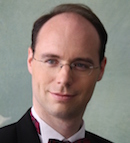
Bruno Clerckx,
Imperial College London, UK
Schedule
Tuesday, August 28
13:30 - 17:00
Room: C205
Summary
MIMO has grown beyond the original point-to-point channel and nowadays refers to a diverse range of centralized and distributed deployments. Numerous techniques have been developed in the last decade for MIMO wireless networks, including among others MU-MIMO, CoMP, Massive MIMO, NOMA, millimetre wave MIMO. All those techniques rely on two extreme interference management strategies, namely fully decode interference and treat interference as noise. Indeed, while NOMA based on superposition coding with successive interference cancellation relies on strong users to fully decode and cancel interference created by weaker users, MU-MIMO/Massive MIMO/CoMP/millimetre wave MIMO based on linear precoding rely on fully treating any multi-user interference as noise. In the presence of imperfect channel state information at the transmitter (CSIT), CSIT inaccuracy results in additional multi-user interference that is treated as noise by all those techniques.
In this tutorial, we depart from those two extremes of fully decode interference and treat interference as noise and introduce the audience to a more general and more powerful transmission framework based on Rate-Splitting (RS) that consists in decoding part of the interference and in treating the remaining part of the interference as noise. This capability of RS to partially decode interference and partially treat interference as noise enables to softly bridge and therefore reconcile the two extreme strategies of fully decode interference and treat interference as noise.
In order to partially decode interference and partially treat interference as noise, RS relies on the transmission of common (degraded) messages decoded by multiple users, and private (nondegraded) messages decoded by their corresponding users. As a result, RS pushes multiuser transmission away from conventional unicast-only transmission to superimposed unicast multicast transmission and leads to a more general class/framework of strategies. For instance, in a MISO Broadcast Channel, RS is shown to encompass NOMA and MU-MIMO with linear precoding as special cases. Through information and communication theoretic analysis, RS is shown to be optimal (from a Degrees-of-Freedom region perspective) in a number of scenarios and provide significant benefits in terms of spectral efficiencies, reliability and CSI feedback overhead reduction over conventional strategies used/envisioned in LTE-A/5G that rely on fully treat interference as noise or fully decode interference. The gains of RS will be demonstrated in a wide range of scenarios: multi-user MIMO, massive MIMO, multi-cell MIMO/CoMP, overloaded systems, NOMA, multigroup multicasting, mmwave communications, communications in the presence of RF impairments and coded caching. Signal processing and optimization techniques used to achieve the fundamentally promised gains are further presented and elaborated. Open problems and challenges will also be discussed.
Biography
Bruno Clerckx is a Reader (Associate Professor) in the Electrical and Electronic Engineering Department at Imperial College London (London, United Kingdom). He received his M.S. and Ph.D. degree in applied science from the Université catholique de Louvain (Louvain-la-Neuve, Belgium) in 2000 and 2005, respectively. From 2006 to 2011, he was with Samsung Electronics (Suwon, South Korea) where he actively contributed to 3GPP LTE/LTE-A and IEEE 802.16m and acted as the rapporteur for the 3GPP Coordinated Multi-Point (CoMP) Study Item. Since 2011, he has been with Imperial College London, first as a Lecturer (2011-2015), then as a Senior Lecturer (2015-2017), and now as a Reader. From March 2014 to March 2016, he also occupied an Associate Professor position at Korea University, Seoul, Korea. He also held visiting research appointments at Stanford University, EURECOM, National University of Singapore and The University of Hong Kong. He is the author of 2 books, 140 peer-reviewed international research papers, 150 standard contributions and the inventor of 75 issued or pending patents among which 15 have been adopted in the specifications of 4G (3GPP LTE/LTE-A and IEEE 802.16m) standards. Dr. Clerckx served as an editor for IEEE TRANSACTIONS ON COMMUNICATIONS from 2011- 2015 and is currently an editor for IEEE TRANSACTIONS ON WIRELESS COMMUNICATIONS. He is an Elected Member of the IEEE Signal Processing Society SPCOM Technical Committee. His research area is communication theory and signal processing for wireless networks.








